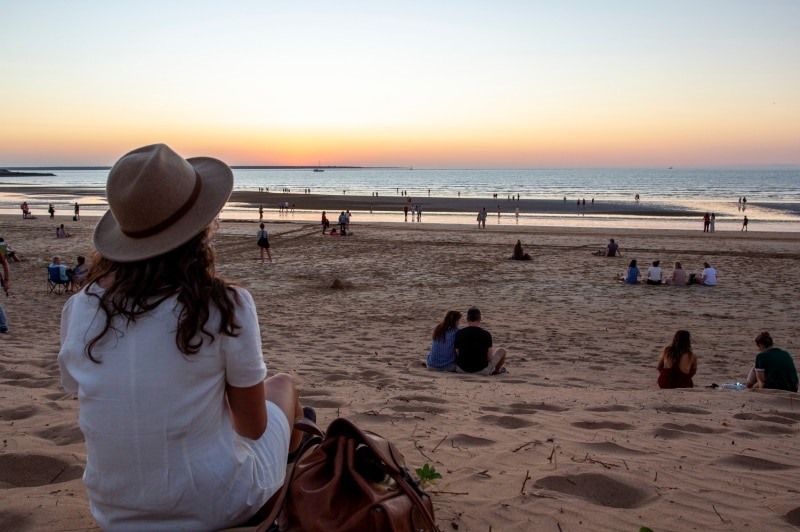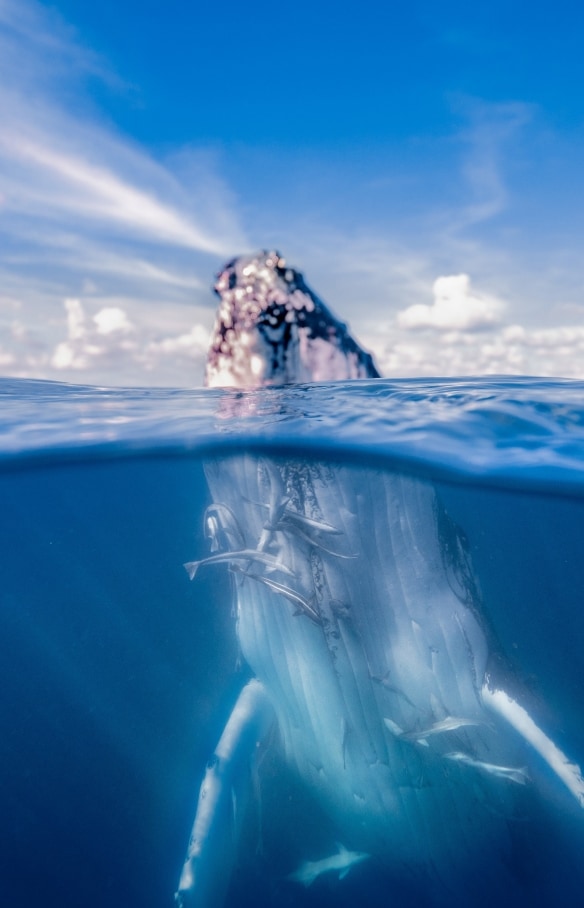
Dive Jervis Bay, Jervis Bay, New South Wales © Jordan Robins
Whale watching in Australia
Every year, parts of Australia’s coastline turn into whale superhighways. Here are some standout spots to go whale watching.
South West, Western Australia
South West, Western Australia
Year-round, you can count on the South West coast to deliver unforgettable whale watching encounters. More than 60,000 humpback whales make their way through the warm waters each year on their journey between Antarctica and northern Australia. You can spot these beauties during a tour with Naturaliste Charters from Augusta between May and August or from Dunsborough from August to November. For some extra fear factor, head to Bremer Bay to watch killer whales hunt from December to April.
Exmouth, Western Australia
Exmouth, Western Australia
On top of many divers’ bucket lists is swimming alongside huge whale sharks or graceful humpback whales, and both feats can be achieved on the World Heritage-listed Ningaloo Reef. Although technically not a whale, swimming alongside gentle whale sharks is a humbling and unforgettable experience that can be had between March and July. As the whale sharks begin to depart for the year, humpback whales move into the region from June to October, making for another awe-inspiring swim.
Sydney, New South Wales
Sydney, New South Wales
Since commercial whaling ended in Australia in the 1960s, the humpback whale population has been on a healthy incline. About 40,000 humpbacks (and counting) travel past Sydney each year, frolicking and breeching close to shore. For almost seven months at a time, Whale Watching Sydney tours depart in search of migrating families of humpbacks, as well as minke, southern right, orca and even blue whales. Get ready to cheer as these playful creatures launch from the ocean.
Jervis Bay, New South Wales
Jervis Bay, New South Wales
Jervis Bay, south of Sydney, is highly regarded for its sparkly white beaches, sandstone cliffs, hidden sea caves and pristine waters. Add migrating pods of humpback whales to the mix and you have a truly picture-perfect destination. Jervis Bay Wild runs tours throughout the season, with the most memorable being during the southern migration. During these later months, the mothers and their nursing calves use the bay to rest and refuel before continuing south.
Eyre Peninsula, South Australia
Eyre Peninsula, South Australia
Since the late 1990s, scientists have been working to protect the southern right whale’s breeding grounds in the Great Australian Bight Marine Park along the stunning Eyre Peninsula. Thanks to these efforts, an impressive 114 whales and calves sought shelter in these waters in 2024. On the five-day whale tour with Untamed Escape, you can journey by land, sea and air to spot these incredible and endangered giants.
Hervey Bay, Queensland
Hervey Bay, Queensland
Queensland’s humpback whale hotspot is Hervey Bay, about a 3.5-hour drive north of Brisbane. Here, the calm waters are protected by the world’s largest sand island, K’gari, creating a restful haven for migrating whales. Aboard tours with Hervey Bay Whale Watch or Spirit of Hervey Bay, you can head above and below deck to see the magnificent creatures from every angle and listen to them via the boat’s hydrophone. If you’re lucky, you may even witness a whale ‘mugging’ the boat, curiously circling the vessel.
Sunshine Coast, Queensland
Sunshine Coast, Queensland
Until you’ve experienced the thrill of jumping into the ocean to swim with humpback whales, it’s hard to imagine their size and power. Sunreef on the Sunshine Coast heads out from Mooloolaba to find gentle giants who stretch up to 18m in length (larger than most buses!). If the conditions and whale temperaments are right, swimmers can enter the water to watch and listen to the whales in their world – a sensory experience that’s nothing short of magical.
Great Barrier Reef, Queensland
Great Barrier Reef, Queensland
Marine life on the Great Barrier Reef isn’t limited to clownfish, turtles and manta rays. Come winter (June to August), migrating dwarf minke whales stop by to mate or give birth, making our iconic reef the only place in the world where you can swim with these elusive mammals. Though slightly smaller than other whale species, these inquisitive creatures still span up to 8m (26ft) in length and make a distinct, lightsaber-like sound. You can share a swim with them aboard an adventure with Mike Ball Dive Expeditions, leaving from Cairns.























































































































































